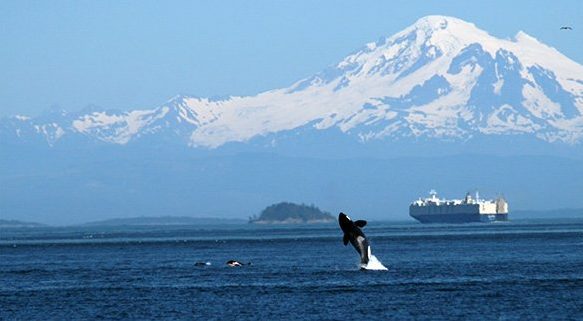Canada’s centres of Network of Excellence announced the launch of a homegrown technology, that can monitor underwater noise, in order to protect endangered marine life.
Ocean Networks Canada’s (ONC) and JASCO Applied Sciences partners in the Vancouver Fraser Port Authority’s Enhanced Cetacean Habitat and Observation (ECHO) Program, which aims to better understand and reduce the cumulative impacts of commercial vessel activities on at-risk whales throughout the southern coast of BC. One such threat is underwater noise from vessels, which makes it more difficult for whales, dolphins and other marine mammals to forage for food, find a mate, keep track of their young and listen for predators.
One pivotal ECHO project has installed a ULS (underwater listening station) on ONC’s observatory network, to monitor the acoustic source levels of incoming ships to the Port of Vancouver and to monitor in real-time for the presence of calling marine mammals.
Developed by JASCO Applied Systems, the ULS and accompanying PortListenTM software system automatically measure and analyze ship noise, and detect and track marine mammals, including cetaceans, as well as pinnipeds (seals and sea lions). Data are streamed in real-time back to ONC’s computers where the information is quickly analyzed by JASCO’s software and the results posted on a web portal for immediate use.
Combined with ONC’s Oceans 2.0 data management platform, the ULS will help the port better understand the noise levels of incoming ships. The data will also inform potential vessel noise reduction solutions and may support the development of additional underwater noise criteria for a Vancouver Fraser Port Authority incentive program that provides harbour due rate discounts for quieter ships.
In January 2017, the port authority announced that it would cut docking fees for quieter ships by nearly half. This makes Canada the first country in the world with a marine noise reduction incentive.
“Our technology makes it possible for the port authority to obtain real-time information on the noise emissions of visiting ships,” says David Hannay, JASCO’s chief science officer. “Users simply logon to a website and can view the comprehensive noise reports on individual vessels as they enter the port.”
JASCO’s earlier systems required technicians to travel to a site to deploy the equipment, have vessels pass by the hydrophones, retrieve and bring the equipment back to their labs, download and analyze the data and then write a report. The whole process would often take several weeks.
“This project would not have gone forward if we had to start from square one installing the hardware and cabling on the seafloor,” adds Orla Robison, Program Manager of the Vancouver Fraser Port Authority’s ECHO Program. “The expense would be prohibitive. ONC’s seafloor infrastructure combined with JASCO Applied Sciences’ underwater listening station is generating critical data that will help inform vessel noise reduction solutions for vessels calling the Port of Vancouver, and other ports around the world.”

































































